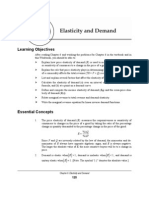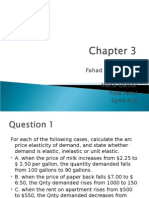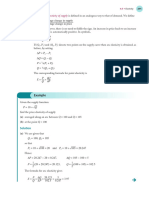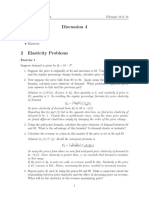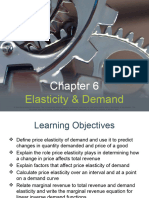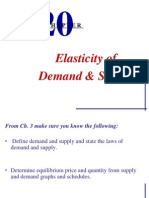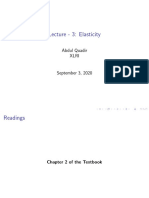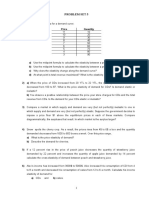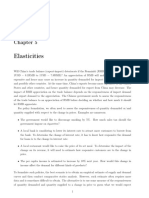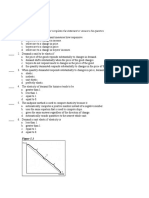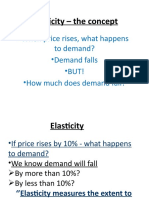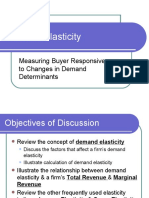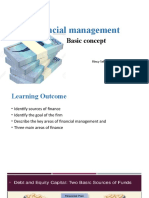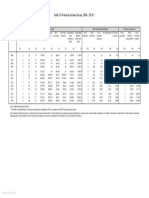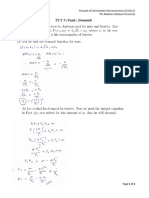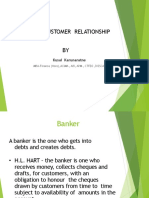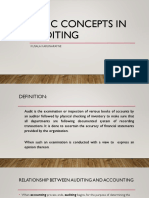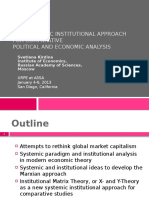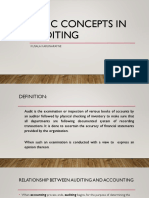0% found this document useful (0 votes)
171 views9 pagesTutorial - Lecture 4 - Questions
mjkmj
Uploaded by
Ahmed MunawarCopyright
© © All Rights Reserved
We take content rights seriously. If you suspect this is your content, claim it here.
Available Formats
Download as PDF or read online on Scribd
0% found this document useful (0 votes)
171 views9 pagesTutorial - Lecture 4 - Questions
mjkmj
Uploaded by
Ahmed MunawarCopyright
© © All Rights Reserved
We take content rights seriously. If you suspect this is your content, claim it here.
Available Formats
Download as PDF or read online on Scribd
/ 9
Study Problems
1
Moving along a demand curve, quantity demanded decreases 21 percent when
price increases 7 percent.
a. The price elasticity of demand elasticity is calculated to be
b, Given the price elasticity calculated in part a, demand is,
(clastic, inelastic, unitary elastic) along this portion of the demand curve.
¢. For this interval of demand, the percentage change in quantity is
(greater than, less than, equal to) the percentage change in
price.
Fill in the blanks:
a. The price elasticity of demand for a firm’s product is equal to -0.5 over the
range of prices being considered by the firm’s manager. If the manager de-
creases the price of the product by 12 percent, the manager predicts the quan-
tity demanded will (increase, decrease) by percent
b, The price elasticity of demand for an industry's demand curve is equal to
0.5 for the range of prices over which supply increases. If total industry
‘output is expected to increase by 6 percent as a result of the supply increase,
managers in this industry should expect the market price of the good to
(increase, decrease) by percent,
Fill in the blanks:
a, When the price effect dominates the quantity effect, demand is
b. When the quantity effect dominates the price effect, demand is
‘When the quantity effect and price effect exactly offset one another, demand
4 When a change in price causes a change in quantity demanded, total revenue
always moves in the direction as the variable (P or Q)
having the effect
Fill in the blanks:
a, When demand is elastic, a decrease in price causes quantity demanded to
and total revenue to
b, When demand is inelastic, an increase in price causes quantity demanded to
and total revenue to
¢. When demand is unitary elastic, a decrease in price causes quantity de-
manded to and total revenue to
4. If quantity decreases and total revenue falls, demand must be
If quantity decreases and total revenue stays the same, demand must be
f. If quantity increases and total revenue rises, demand must be
Chapter 6: Elasticity and Demand
126
12 (in dollars)
Pri
5.
Use the graph below of ali
f
Quantity
‘The equation for the linear demand in the figure above is Q
‘The equation for the inverse linear demand is P=
car demand curve to answer questions 5 and 6:
Using the equations in parts a and b, find the missing prices and quantities at
points 4 — F:
A: PHS. co EO
BO D: P=S. F: PHS.
‘Compute the following interval (or arc) elasticities:
Interval Ato B: Bus =
Interval CtoD: ey
Interval E10 F: Ege
Compute the following point elasticities using the two
E=(AQ/AP)x(P/Q) and E = P/(P- A)
Point
P
c
Demand is unitary elastic at a price of $ and quantity of.
‘As quantity increases along the demand curve, demand becomes
formulas
(more, less) elastic. As price falls along the demand curve, demand becomes
(more, less) elastic,
(Chapter 6: Elasticity and Demand
127
12
Use the figure in question 5 to answer the following:
a, The equation for marginal revenue is MR =
b. MR crosses the price-axis at P=S MR is zero at Q=
c IEMRis (ising, falling, zero, positive, negative), then de-
‘mand is elastic.
a EMRIs (rising, falling, zero, positive, negative), then de-
mand is unitary elastic
(ising, falling, zero, positive, negative), then de-
Use the figure below to answer the following questions:
P
24
13
g
Es
° Quantity
a. Compute the point elasticity of demand at a price of $8 for D1, Dz, and Ds
Di E=
Dy E
Ds B=
b, At what price is demand unitary elastic for each of these three demand
curves?
Ds P=
Dz P=
Ds: P
©. Ata price of $8, the point price elasticity of demand for Dy and Ds are
Explain this result
Chapter 6: Elasticity and Demand
128
8
9,
10,
4,100
Price (dollars)
a, Using the formula E
b. Using the formula
Ifa firm sells an additional unit of output and total revenue rises, then marginal
revenue must be (negative, positive) and demand must be
(clastic, inelastic, unitary clastic). Altematively, if@ firm sells an
additonal unit and total revenue falls, then marginal revenue must be
(negative, positive) and demand must be (clastic,
inelastic, unitary elastic).
Suppose the demand for good X is Q, = 100P~
a Whats total revenue when P = $27 When P = $4? When P = $10?
b. This demand curve has a (ising, constant, falling) clasticity of
demand equal to
Use the figure below to answer the following questions:
Pp
no
500
100
° 200 250
Quantity
(AQ! APP /Q), the computed value of the price
elasticity at point His E
= P/(P— A), the computed value of the price elasticity
at point [Tis B=
cc. Compare the elasticities in parts @ and b. Are they equal? Should they be
equal?
4. Calculate price elasticity at point G.
Which formula did you use to compute elasticity at point Gin part ¢” Why’?
Chapter 6: Elasticity and Demand
129
x
c
‘The general linear demand for good X is estimated to be
Q = 125,000 - 400P—0.76.M +360,
where P is the price of good X, M is average income of consumers who buy good
X, and Pr is the price of related good R. The values of P, M, and Ps are expected to
bbe $200, $45,000, and $120, respectively. Use these values at this point on demand
to make the following computations.
a,
‘Compute the quantity of good X demanded for the given values of P, M, and
Pr.
For the quantity in part a, ealeulate the point price elasticity of demand. At
this point on the demand, is demand elastic, inelastic, or unitary elastic?
How would decreasing the price of X affect total revenue? Explain.
Calculate the income elasticity of demand Ey. Is good X normal or inferior?
Explain how a 3.5 percent decrease in income would affect demand for X, all
other factors affecting the demand for X remaining the same.
Calculate the cross-price elasticity Eyx. Are the goods X and R substitutes or
complements? Explain how a 6 percent increase in the price of related good
R would affect demand for X, all other factors affecting the demand for X
remaining the same?
Find the equations for demand, inverse demand and marginal revenue for the
given values of P, M, and Py. At the point on demand in parts a and 6, is
marginal revenue positive, negative or zero? Is this as you expected? Ex-
plain why or why not.
‘When the price of good X is $75, calculate the following elasticities:
a
Panel A shows how the demand for X shifts when income increases from
$33,000 to $35,000. The income elasticity of demand for X equals
Good X is a(an) good
Panel B shows how the demand for X shifts when the price of related good Y
decreases from $80 to $60. The cross-price elasticity equals,
Goods Xand ¥ are
275
fe
pewenco 8 L oey=s
£ Neoresisoi0) 5 i \B eye seo)
200 4800 045004900
Chapter 6: Elasticity and Demand
130
1B
‘The following figure shows a linear demand curve. Fill in the blanks a through as
indicated in the following figure:
PMR
3
e
8
e
z
8
&
margnal Kevenue
5 ;
_ 4a
5
2 tars Total Revenue
2
a
0 38 At a
Quantity
‘Chapter 6: Elasticity and Demand
131
Multiple Choice / True-False
1. The absolute value of price elasticity of demand
is [%AP| + |%A0,|
is less than one when marginal revenue is positive.
is always greater than one.
is always greater than one when marginal revenue is negative
gets smaller as price falls along demand,
2, The ctoss-price elasticity is
a. positive for normal goods.
b. negative for substitute goods.
©. negative for complementary goods.
4. positive for inferior goods.
3. The income elasticity of demand is,
a. positive for normal goods.
b. negative for substitute goods.
©. negative for complementary goods.
d. positive for inferior goods.
4, The interval method is used to compute price elasticity
a. when a price change causes a relatively large movement along demand.
b, so elasticity can be computed for rather small changes in price.
©. for nonlinear demand curves because point elasticity cannot be computed for
curves,
4. because demand curves are downward sloping,
5. The demand for most agricultural products is rather inelastic. Thus, when bad
weather reduces the size of crops (i, supply decreases),
a, farmers’ incomes rise.
b. the marginal revenue of selling one more unit of an agricultural product is
negative.
¢. the percentage decrease in crop sales exceeds the percentage increase in
price.
4. bothaand b.
both bande.
6. If price elasticity of demand is -1.8 and price falls by 20 percent, then sales
increase by
a. 11.1 percent
b. 36 percent
©. 9percent.
90 percent
Chapter 6: Elasticity and Demand
132
7. Ifpprice falls along a segment of demand that is price inelastic,
a. arrows representing the price and quantity effects both point down.
b. an arrow representing the price effect points down and is longer than an ar-
row for the quantity effect.
©. an arrow representing the price effect points down and is shorter than an ar-
row for the quantity effect.
. arrows representing the price and quantity effects both point up,
8. Ifprice rises along a segment of demand that is price elastic,
a. an arrow representing the quantity effect points down and is longer than an
arrow for the price effect.
b. an arrow representing the quantity effect points up and is longer than an ar-
row for the price effect.
©. total revenue moves in the direction of the arrow forthe price effect.
4d. the arrows for the price and quantity effects point in opposite directions and
are of equal length:
9. Which of the following would NOT tend to make demand for a good X more elas-
tic?
a. A major competitor of good X goes out of business
b. Product Yis improved so that it becomes more durable.
c. Incomes fall, which increases the share of families’ budgets spent on X.
d.— bothaande.
the figure below to answer questions 10-12:
P
bemang
Price (dolars)
1 S
EL, 4 4, a 4,
° ee a ee er)
Quantity
10, The point elasticity of demand when price is $2 is
a. 6/90.
b -Is
e172.
a 2,
Chapter 6: Elasticity and Demand
133
14,
16,
17,
18,
19,
20,
If price falls from $2 to $1.99, then
a. total revenue rises because E =-15,
b. total revenue falls because £ = -1/2.
c. marginal revenue must be positive because total revenue rises,
4. total revenue equals $1.99.
‘When price is $2, marginal revenue is,
a. negative,
b. zero.
©. positive
equal to price.
If the income elasticity of demand is -0.80 and quantity demanded increases by 10
percent as a result of a change in income, the income must have
a. increased by 8 percent.
b. _ incteased by 80 percent.
©. decreased by 8 percent,
decreased by 12.5 percent.
When demand is unitary elastic
a. marginal revenue is zero.
b. the percentage change in quantity equals the percentage change in price.
©. an increase in price has no effect om the quantity demanded,
4. bothaand b
©. allofthe above
When marginal revenue is negative
a MR
